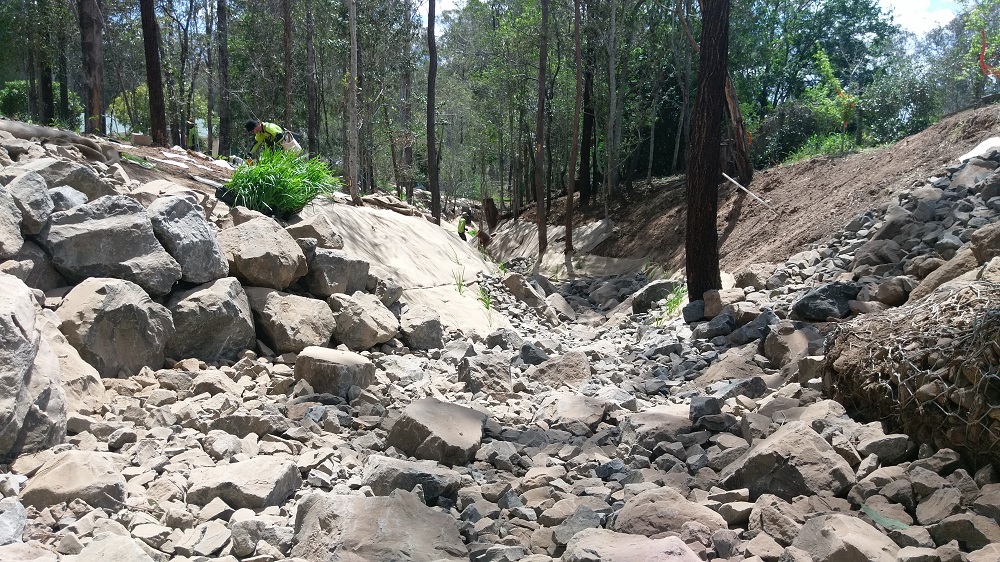More than 200 tonnes of rock and 11,000 plants have drastically improved a 180-metre section of Ironpot Creek at Pine Mountain.
Ironpot Creek connects to the Bremer River, and its Pine Mountain stretch in particular has steep banks with a long history of erosion issues due to its soil types.
Environment and Sustainability Committee chairperson Division 4 Councillor Russell Milligan said the significant works will help prevent erosion from collapsing the creek’s banks, giving a major boost to the health of the Bremer River.
“This particular section of Ironpot Creek was identified in council’s new Waterway Health Strategy as an area requiring targeted actions, and through these works, council is delivering on its commitment to improve our region’s waterways,” Cr Milligan said.
“These works will prevent up to 100 cubic metres of sediment each year from washing into the Bremer River and contributing to poor waterway health scores.”
Division 4 Councillor Kate Kunzelmann said the works would provide major benefits for residents and the environment now and into the future.
“These works will also protect nearby properties from worsening erosion,” Cr Kunzelmann said.
“The design and construction will allow native vegetation to re-establish, and by slowing the stormwater runoff from nearby urban areas will make for a healthier creek system.”

Image: Before works commenced at Ironpot Creek at Pine Mountain.

Images: After more than 200 tonnes of rock and 11,000 plants were installed.
The Ironpot Creek project is part of the Stormwater Quality Offsets Scheme, which uses developer contributions to deliver projects that improve water quality.
The design has created a series of rock pools that allow a transition of levels through the creek. This both reduces erosion caused by water velocity, and allows the sediment to settle.
Once the plants are established, Ironpot Creek will once again represent a natural landscape. Council has re-used natural materials on site, for example a few trees that had to be removed during the works were integrated into the rock pools and used to stabilise banks.
Why is sediment a problem?
- Contains nitrogen and phosphorous which are bad for waterway health.
- Makes the Bremer cloudy and visually unappealing.
- Reduces the dissolved oxygen in the water, which impacts fish and aquatic species.
- Smothers habitat and reduces light which impacts waterway plant species.
- Potentially gets flushed to Moreton Bay and affects important sea grass habitat.




what about where the Ironpot enters the river and how much run off comes from the Grammar playing fields
That is really great news. It would be so nice to see the Bremer River healthier. Maybe there will even come a day we can swim in it!
Yes good work.
However the article fails to explain “Developer Offset”
this basically where a developer pays a token amount to destroy the existing flow paths and water ways.
In the long term transferring the environmental cost of their development to the community.
The developments increase stormwater velocity and displace erosion downstream back into the natural flow paths increasing flooding .
In this way the council accepts payment and gives permission to developers to damage the community in the longer term.
Then the council takes that money to attempt to repair damage done by earlier developments in the catchment.
thus the council promotes its ‘environmental credential” while looking after developers who never pay the real cost of their damage to the communities environment because that is their “profit”.
We are not so easily fooled.